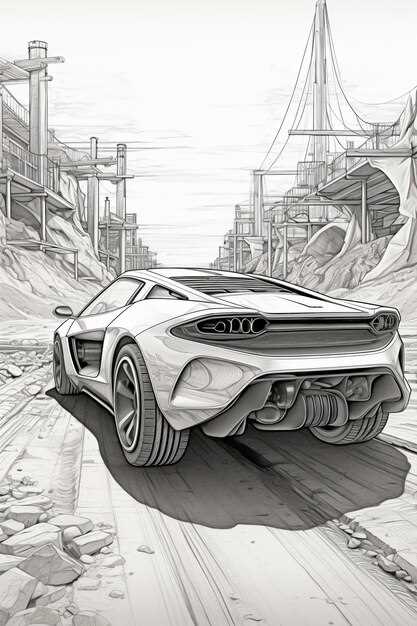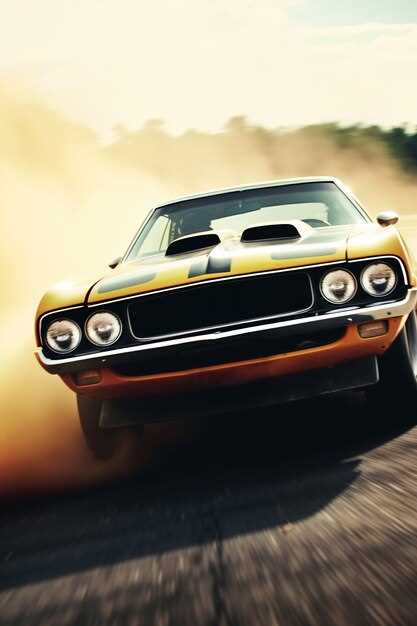
The Ford Mustang, an iconic American muscle car, has undergone a remarkable transformation since its inception in 1964. Initially designed as a compact and affordable sports car, it quickly captured the hearts of enthusiasts and everyday drivers alike. Over the decades, the Mustang has evolved through various generations, reflecting changes in consumer preferences, technological advancements, and broader automotive trends.
From the classic first generation, which embodied the essence of freedom and rebellion in the 1960s, to the sophisticated modern iterations, the Mustang’s design and performance have consistently pushed boundaries. Each new model introduced innovations that not only enhanced driving experience but also responded to the shifting landscape of environmental concerns and fuel efficiency standards. Notably, the arrival of turbocharged engines and hybrid technology in recent years signifies a new era for this beloved vehicle.
The Mustang’s transformation is also a story of cultural impact, as it has appeared in countless films, television shows, and music, cementing its status as a symbol of American automotive culture. As we delve into the history of the Ford Mustang, we will explore the defining features and key milestones of each generation, highlighting how this legendary car continues to inspire passion and admiration across generations of car lovers.
Design Evolution: Key Changes from 1964 to Present
The Ford Mustang was introduced in 1964, characterized by its long hood, short rear deck, and an aggressive stance. The initial design featured a simple, clean look with a distinctive grille and round headlights, making it instantly recognizable. The first-generation Mustang, produced until 1973, embraced the “pony car” ethos, blending performance with affordability and style.
In the mid-1970s, the Mustang experienced a significant shift during the oil crisis, leading to smaller dimensions and a focus on fuel efficiency. The second generation, known as the Mustang II (1974-1978), showcased rounded contours and a more compact structure, sacrificing some performance elements for economy. Despite its lower power, the Mustang II retained an iconic design language that appealed to a new generation of buyers.
The third generation, spanning from 1979 to 1993, saw a return to the more aggressive styling with sharper edges and a wedge-shaped profile. This era introduced the Fox platform, allowing for increased performance and a variety of body styles. The design incorporated elements such as more aerodynamic features and larger rear lights, aligning it with contemporary automotive trends.
The fourth generation (1994-2004) reestablished the Mustang as a performance icon, with a more modern design that harked back to classic elements like the galloping pony badge and simplistic lines. This phase also emphasized technological advancements, with an interior designed for comfort and convenience, appealing to both enthusiasts and everyday drivers.
In 2005, the Mustang entered its fifth generation, characterized by retro styling that paid homage to its roots. The design included broader fenders, a more defined grille, and retro-inspired interior features, marrying classic elements with modern performance and safety. This generation was well-received, demonstrating Ford’s ability to blend nostalgia with contemporary design sensibilities.
The sixth generation, launched in 2015, further evolved the Mustang’s aesthetics while enhancing performance. The design became sleeker, featuring a lower roofline, more aggressive front fascia, and sophisticated LED lighting elements. This generation embraced global markets, resulting in a design that appeals to a broader audience while retaining the muscular presence that defines the Mustang.
As of 2023, the Ford Mustang continues to evolve while respecting its storied lineage. The latest models incorporate advanced technology, sustainability initiatives, and dynamic performance features, demonstrating Ford’s commitment to innovation. The blend of classic design cues and modern engineering keeps the Mustang relevant in a rapidly changing automotive landscape.
Performance Upgrades: How Mustang Engines Have Advanced

The Ford Mustang has undergone significant engine advancements since its inception in 1964. Initially powered by a modest inline-six or a V8, the performance landscape of the Mustang has evolved dramatically over the decades. Each generation has brought innovations that cater to the increasing demands for power, efficiency, and technology.
In the early years, the 289 V8 engine emerged as a popular choice, delivering approximately 271 horsepower. This era set the foundation for Mustang’s performance pedigree, combining lightweight design with solid power output. The introduction of the 302 V8 in the late 1960s marked a pivotal moment, showcasing advancements in both speed and handling.
The 1970s presented challenges due to fuel crises and emissions regulations, leading to the implementation of smaller engines. However, in the 1980s, the Mustang experienced a revival with the arrival of the 5.0-liter V8. This engine, often referred to as the “high-performance small block,” regained the Mustang’s status as a performance icon, producing 225 horsepower and offering a thrilling driving experience.
Entering the 1990s, the Mustang began to incorporate more sophisticated technologies. The introduction of the 4.6-liter V8 in the fourth generation included a modular engine design, allowing for improved performance and better fuel efficiency. The late 1990s transitioned to the new millennium, leading to the development of the 5.4-liter supercharged V8 in the Mustang GT500, which pushed horsepower to astonishing levels, surpassing 500.
The recent generations have embraced turbocharging and advanced engineering. The introduction of the 2.3-liter EcoBoost inline-four engine showcases Ford’s commitment to performance without sacrificing fuel economy. This engine delivers a remarkable 310 horsepower while providing enhanced throttle response and agility.
Currently, the flagship Mustang, the 5.0-liter Coyote V8, epitomizes modern muscle car engineering. With features like twin independent variable cam timing, it produces over 450 horsepower and achieves better fuel efficiency than its predecessors. Advances in engine management systems and integration of lightweight materials continue to push performance boundaries.
In conclusion, the evolution of Mustang engines reflects a relentless pursuit of performance. Each generation has demonstrated Ford’s ability to adapt to automotive trends while maintaining the core spirit of the Mustang. As technology progresses, future models promise even more exhilarating driving experiences, ensuring that the Mustang remains a formidable player in the performance car arena.
Market Impact: The Mustang’s Influence on American Muscle Car Culture

The Ford Mustang, introduced in 1964, is often credited with igniting the muscle car phenomenon in America. Its unique combination of performance, style, and affordability appealed to a broad audience, establishing a new category of vehicles known as “pony cars.” This segment emphasized sportiness and youthful exuberance, paving the way for competitors like the Chevrolet Camaro and Pontiac Firebird, which sought to capture the same market enthusiasm.
The Mustang’s debut was timely, coinciding with the rise of the youth culture of the 1960s. Young drivers, eager for cars that matched their desire for freedom and adventure, found the Mustang’s sleek design and powerful engine options irresistible. This cultural shift not only solidified the Mustang’s position in the market but also influenced manufacturers to tailor their offerings toward younger consumers, transforming marketing strategies across the automotive industry.
As the Mustang evolved through the decades, it continually reflected changing tastes and societal trends. The introduction of factory performance packages, such as the GT350 and Mach 1, further entrenched its status as a performance icon. These innovations sparked a competitive environment where brands were compelled to enhance their offerings, driving technological advancements in speed and handling within the muscle car category.
The Mustang’s influence extends beyond its direct competitors; it has become a cultural symbol, featured in films, television shows, and music. This representation has contributed to its legendary status, fostering a devoted fan base and significantly impacting American automotive culture. Car enthusiasts view the Mustang not only as a vehicle but as an emblem of freedom and rebellion, solidifying its legacy as a cornerstone of the muscle car movement.
Throughout its history, the Mustang has adeptly responded to shifting market demands while maintaining its core identity. Its ability to adapt and innovate has ensured its ongoing relevance amid the fierce competition, helping to sustain the muscle car genre. Today, the Mustang remains a benchmark in the segment, continuing to inspire new generations of enthusiasts and influencing the broader automotive landscape.
